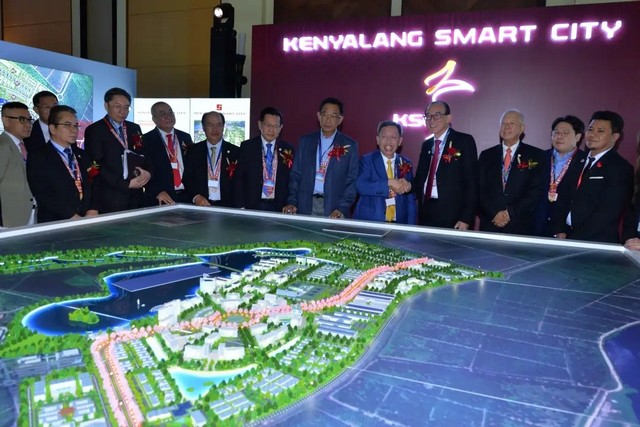Sarawak’s ambitious Kenyalang Smart City (KSC) project, led by renowned homegrown architect Teo Ah Khing and his firm TAK on behalf of developer Imasa Dinasti Sdn Bhd, is set to transform Miri City into a leading example of sustainable and high-income urban living. This initiative was a focal point at the Kenyalang Smart City Summit held on May 29, 2024.
Sarawak’s Deputy Premier, Datuk Amar Dr Sim Kui Hian, delivered a keynote speech on behalf of Sarawak Premier Datuk Patinggi Tan Sri Abang Johari Tun Openg, outlining the project’s goals and significance.
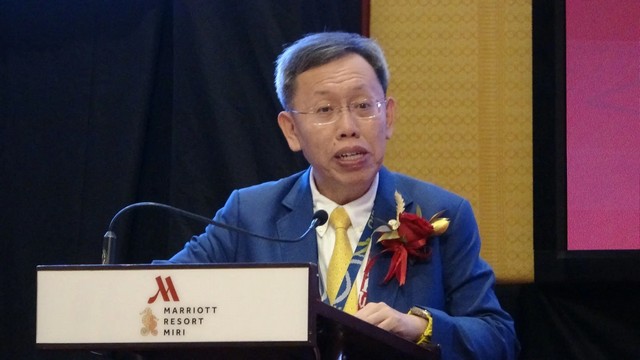
Comprehensive Development Plan
The Kenyalang Smart City project is a multi-faceted development plan that includes residential, commercial, and recreational facilities. Its design aims to create a self-sustaining urban environment that meets the needs of its residents while minimising its ecological footprint. The inclusion of educational institutions like a branch of Fudan University and a convention centre further enhances the city’s appeal, providing opportunities for learning, research, and international collaboration.
The project’s focus on renewable energy and sustainable practices aligns with global environmental goals and positions Sarawak as a leader in green urban development. The KSC initiative also includes plans for advanced transportation systems, smart infrastructure, and digital connectivity, ensuring that the city remains at the forefront of technological advancements.
Strategic Location and Impact
Located next to Curtin University Malaysia and covering 543 acres, the KSC will be developed over a span of 15 to 20 years, with an estimated Gross Development Value (GDV) of RM5 billion. The project will be implemented in several phases, with the first phase including the construction of a 3,000-person capacity Miri Convention Centre, set to begin in the third quarter of 2024. This strategic timeline ensures a steady and sustainable development process, with each phase building on the success of the previous one.
The Premier noted that Miri and Bintulu are poised for economic growth towards 2030 and beyond, driven by renewable energy projects and increased international investment in Sarawak’s green initiatives.
“Sarawak’s approach to being part of global climate change initiatives has put us on the world map,” he said, highlighting the integration of top-tier educational institutions and smart infrastructure within the KSC. This focus on sustainable development aligns with global trends towards decarbonisation and a green economy.
Collaborative Efforts and Partnerships
The realisation of KSC is a testament to the power of collaboration. Various stakeholders, including the city council and the private sector, have come together to make this vision a reality. Miri Mayor Adam Yii assured the council’s support for the project, aligning it with Miri City’s vision of becoming a “green, smart, and most liveable international resort city.” The summit also saw the signing of eight Memoranda of Understanding (MoUs) between Imasa Dinasti Sdn Bhd and several international entities, further demonstrating the global support and interest in this transformative project.
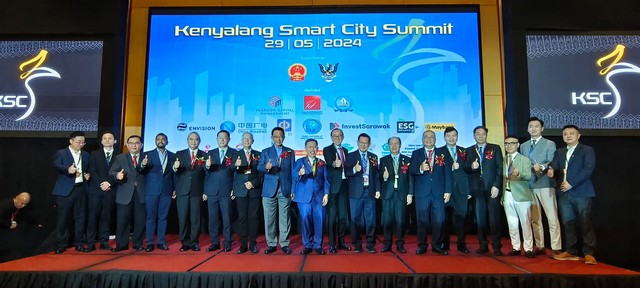
Notably, the MoU with Fudan Institutes of Integrative Medicine aims to establish the Southeast Asia branch of Fudan University’s Institutes of Integrative Medicine in KSC, potentially paving the way for a Sarawak branch campus of this prestigious Chinese university. This collaboration opens up opportunities for international students and researchers to contribute to the development of the KSC project, fostering a global learning and research environment.
Other MoUs include agreements with China Broadnet for smart infrastructure and communications and with ESG Malaysia to implement best sustainability practices. These partnerships underline the comprehensive approach of the KSC project, integrating advanced technologies and sustainable practices into the city’s development.
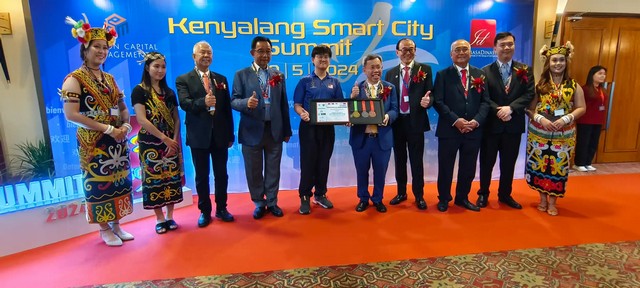
Boost to Tourism and Local Economy
Sarawak’s Minister of Tourism, Creative Industry, and Performing Arts, Dato Sri Abdul Karim Rahman Hamzah, emphasised KSC’s potential impact on tourism. Miri, already home to UNESCO World Heritage sites like Mulu National Park, stands to benefit from enhanced connectivity and political stability, attracting both tourists and investors. The Kenyalang Smart City will not only transform the city’s landscape but also its tourism potential, offering a new and exciting destination for visitors from around the world.
“Kenyalang Smart City will have a very big impact on tourism as Miri is ideally situated,” he noted.
Miri’s evolution from a small fishing village to a cosmopolitan city with rich cultural diversity and tourist attractions makes it an ideal location for such a transformative project. The city’s history of resilience and growth, highlighted by its oil discovery in 1910 and elevation to city status in 2005, sets a strong foundation for the KSC initiative. Miri’s unique character, shaped by its 34 ethnic groups living harmoniously together, adds a cultural richness that will be enhanced by the new developments.
Since then, Miri has been selected as the pioneer city for the Smart City Initiatives by the state government, embarking on the second phase of these initiatives. This includes the Miri City Command Centre, expansion of Safe Park and Safe City Initiatives, and further digitisation of Miri City Council processes.
Mayor Adam Yii highlighted the city’s vision, stating, “Miri City is now embarking on the second phase of the Smart City Initiatives. Our goal is to develop Miri into a ‘Green, Smart, and the most Liveable International Resort City’.”
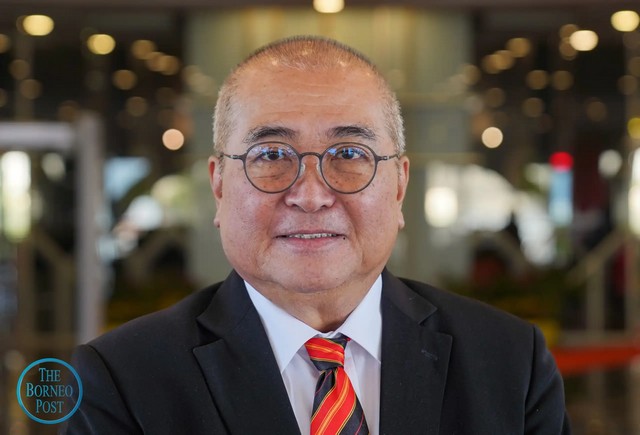
Looking Forward
The Kenyalang Smart City is designed as a model for sustainable development and smart urban planning. It integrates green architecture, clean energy clusters, and innovation parks with essential educational and medical facilities, focusing on community-centric development.
The Premier emphasised, “The Kenyalang Smart City is foundational to the future we want to shape in Sarawak as a developed and high-income region in Malaysia.” He invited developers and architects to replicate the KSC model throughout Sarawak, underscoring its potential to drive economic transformation in the northern part of the state up to 2050.
With state government approval and support, the KSC project is slated to begin construction in July 2024, following detailed studies and compliance checks. As Sarawak Deputy Premier Dr. Sim Kui Hian and other dignitaries underscored at the summit, the Kenyalang Smart City represents Sarawak’s commitment to sustainable development and economic prosperity. The collaborative spirit and forward-thinking vision embedded in the KSC project promise to propel Sarawak towards a future of innovation, sustainability, and global recognition.
The Kenyalang Smart City initiative represents a significant step forward in Sarawak’s development strategy, combining sustainable practices with advanced urban planning to create a model for future cities. The project’s emphasis on community, innovation, and environmental stewardship aligns with broader goals of economic transformation and global integration. As construction begins, the eyes of the world will be on Sarawak, observing its progress in building a city that promises to redefine urban living and set new standards for smart, sustainable development.
References:
“Kenyalang Smart City To Lay Foundation For Future Cities In Sarawak”
“Kenyalang Smart City: Redefining urban development for modern living”
“Kenyalang Smart City project kicks off with 8 Key MoUs signed, marking major devt for Sarawak”
“Kenyalang Smart City to accelerate Miri’s next development phase, says mayor”
“Kenyalang Smart City to have big impact on tourism in Miri, says Abd Karim”
“Convention centre part of Kenyalang Smart City project”


